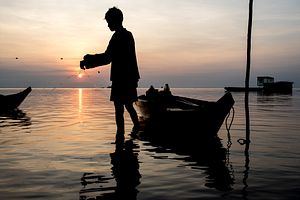Luc Forsyth and Gareth Bright have set out on a journey to follow the Mekong river from sea to source. The Diplomat will be sharing some of the stories they’ve found along the way. For more about the project, check out the whole series here.
Following the Tonle Sap river further inland to the massive lake of the same name, we spent several days on a floating research station as we explored the area’s floating villages, interviewed fishermen, and learned about the great challenges facing the Tonle Sap.
* * *
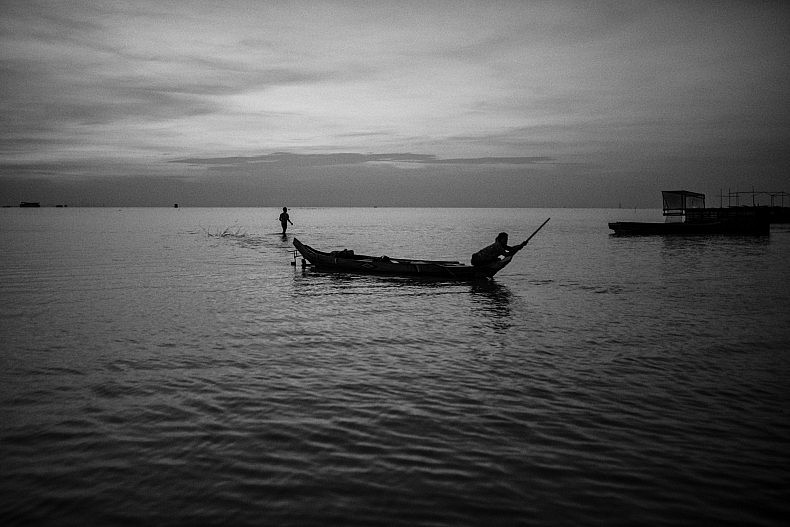
The Tonle Sap is known to be one of the world’s most productive freshwater ecosystems, but all is not well. Photo by Gareth Bright
“Turn your lights off soon or people will see us.”
The fisherman spoke in a muted voice that barely carried over the few meters between our boats. The night was moonless and it was pitch black at 3:30 am on the Tonle Sap lake. We needed to use our headlamps to check the focus of our cameras and were at first confused by the fisherman’s apprehension. When we asked if he was worried the LED beams would scare the fish away, he replied calmly: “No, it’s because we are in the conservation zone. If they catch us we will be in trouble.”
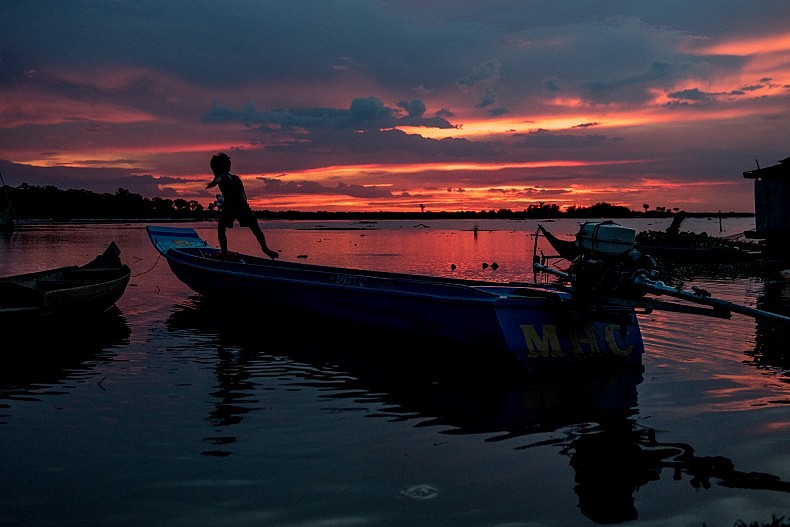
A boy runs along the gunnels of a fibre glass fishing boat in the village of Akol. Photo by Luc Forsyth
Two hours later, in the shallow water surrounding the floating village of Akol, the fishing boats gathered in the blue pre-dawn light to check their catch. Their mood was cheerful as they picked through the nets, pulling healthy (if smallish) looking fish from the nylon mesh and tossing them into large metal bowls. There was no sign of their former nervousness, the danger apparently passed.
Considering that the lake was known to be one of the world’s most productive freshwater ecosystems, as well as one of the main sources of protein for the country’s 15 million people, the fact that fishermen were resorting to sneaking into protected areas spoke of an alarming truth: the Tonle Sap, often referred to as “Cambodia’s beating heart,” was struggling.
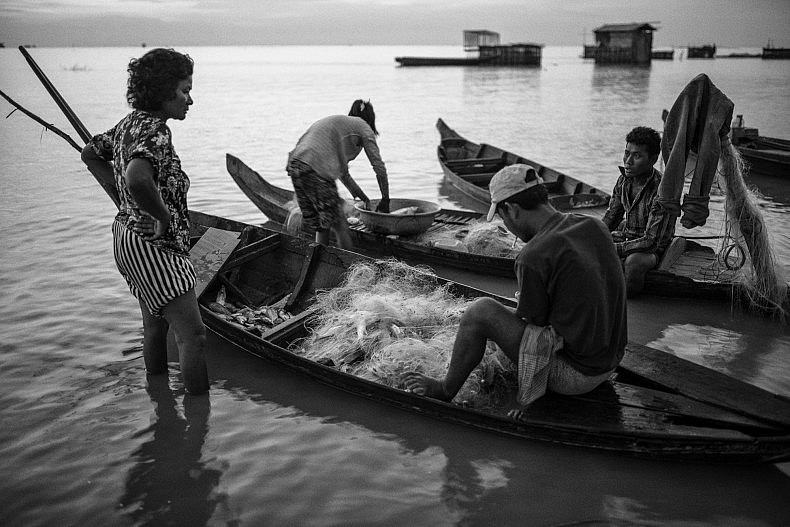
Fishermen pick through their nets near the village of Akol. Photo by Gareth Bright
“Outside the conservation area there are no fish, so what should I do?” Chan Savoeun asked us rhetorically. A 28-year-old fisherman (whose name has been changed to protect his identity), Savoeun had been fishing in the Tonle Sap for more than a decade, and was well aware of the lake’s ailing health. “I am catching around 30-50 percent less fish than I did [10 years ago], so we have no choice but to fish in the protected zone. We know this is not good, and we are all worried about what will happen if there are no fish left [in the conservation area], but how else can we survive?”
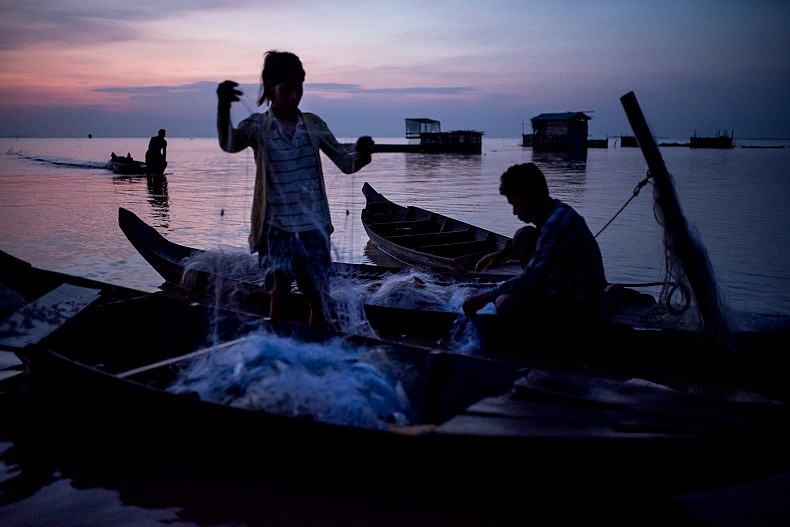
Fishermen pick through their nets near the village of Akol. Photo by Luc Forsyth
The Great Lake
We had come to Akol, a floating community of roughly 30 families, to try and learn how the Tonle Sap (commonly translated as “The Great Lake”) influenced those who lived from its floods. Though it was the peak of the dry season and the village’s pontoon houses were tethered to an exposed sandbar, their temporary attachment to land did not lessen their dependence on the water. “There is not one family here who does not earn their income from the lake,” Savoeun told us.
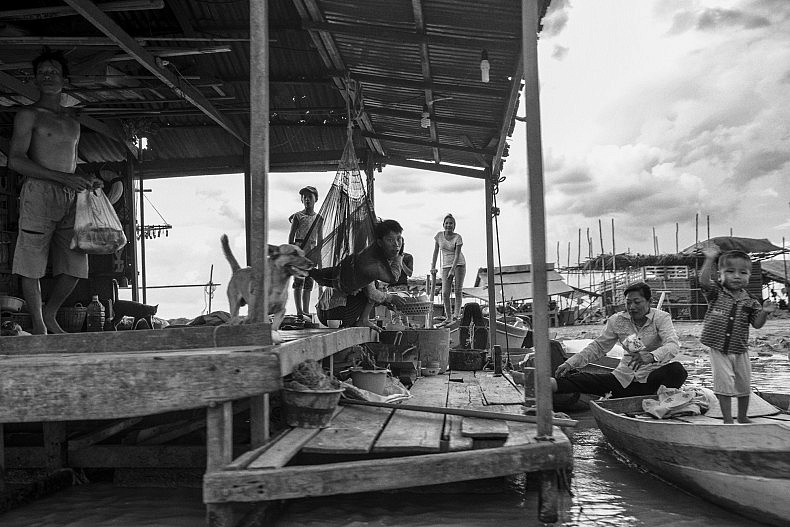
During the dry season, Akol’s pontoon houses are tethered to an exposed sandbar. Photo by Gareth Bright
Looking around, it was easy to see the truth of what Savoeun said. Apart from a makeshift volleyball court erected on the coarse red sand and a few wells (which, full of lake water as they were, were meant for convenient showering and dishwashing rather than as a source of clean potable water), it was apparent that very few, if any, aspects of life in Akol were dictated by access to dry land. There was only one permanent structure, still under construction, and it was destined to serve as an office for an international conservation organization. When the monsoon rains returned later in the year and the lake’s level rose by up to 8 additional meters, the village could lift anchor and drift away, leaving the office to stand alone.
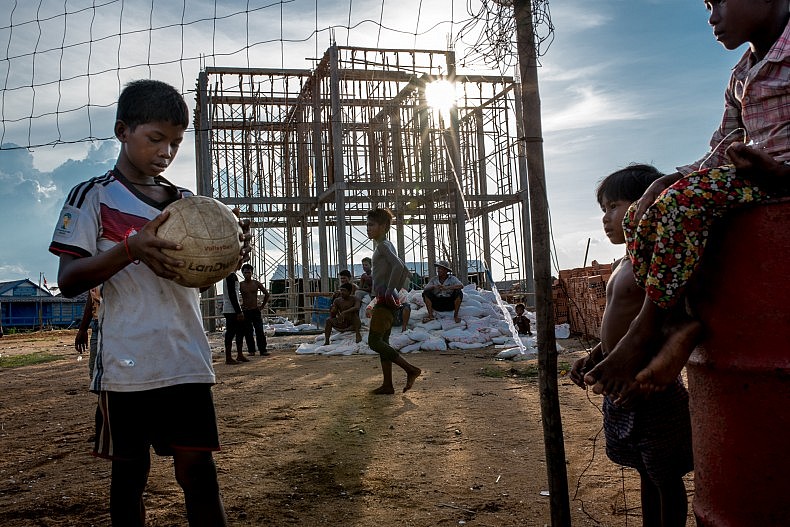
The village’s only permanent structure, still under construction, is destined to serve as an office for an international conservation organization. Photo by Luc Forsyth
But the Tonle Sap, whose once bountiful waters support dozens of communities like Akol, was not well. Generations of overfishing, combined with a rapidly growing population, had stretched the lake’s already diminishing fish population to its breaking point, as evidenced by the morning’s trip into the protected zone. The widespread use of illegal fishing equipment — from nets so fine that even the smallest and youngest fish were trapped to battery-powered electric nets that killed every living creature in the shock radius — had further decimated stocks. Deforestation and human-induced bush fires had ravaged the aquatic trees amongst whose submerged root systems young fish were hatched before migrating into deeper waters.
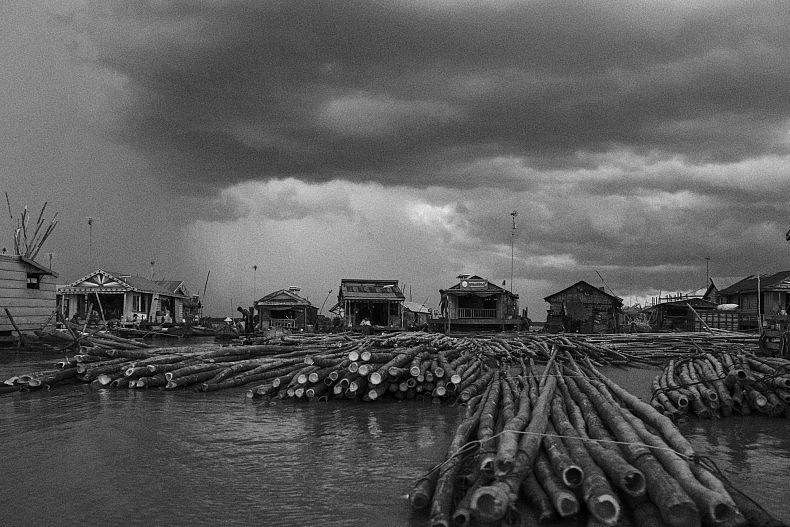
The village of Akol floats on the Tonle Sap. Photo by Gareth Bright
“I noticed that animals were being reduced by hunting and fishing, and that the forests were burning — so I asked for this job,” Horm Sok, a field researcher employed by Conservation International told us.
Though he had only held the job for six years, Horm Sok had been living in Akol since 1979 and has borne witness to the dramatic changes afflicting the Tonle Sap. “The population has grown so much and the fish are disappearing,” he told us as we followed him through the sweltering jungle to see some of the conservation initiatives he oversaw. “There didn’t used to be so many fishermen or illegal fishing.”
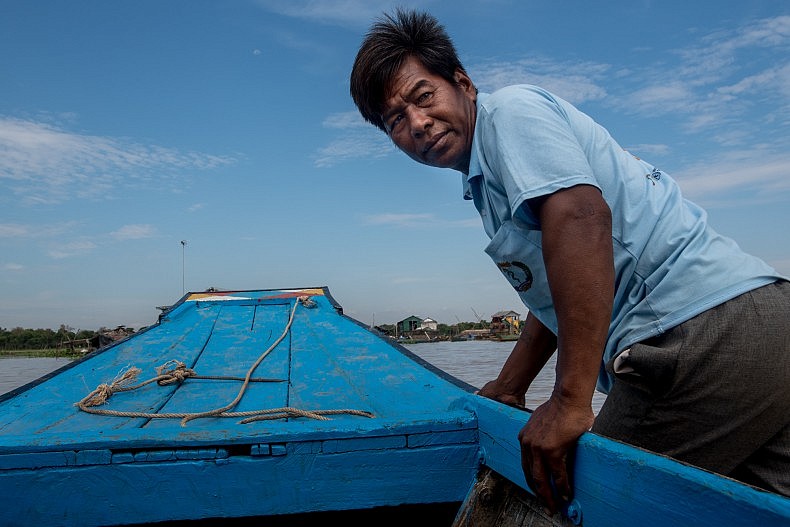
Horm Sok, a researcher for Conservation International, drags a boat over a shallow sandbar on his way to an area of forest he is responsible for monitoring. Photo by Luc Forsyth.
Horm’s responsibilities ranged from monitoring forest fires to photographing otter dung as a means of monitoring species numbers, but there were two projects in particular he hoped would be effective in slowing the loss of marine life.
Destruction of the coastal forests that acted as nurseries for infant fish was caused by multiple factors, he told us, almost all of which involved human activity or negligence. Carelessly tended cooking fires had sparked blazes that ravaged 30 hectares of land in the last year alone. “The loss of 30 hectares represents up to 3 percent of the future fish population,” Horm said, adding perspective. And while the loss of 20 football fields worth of forest might not seem like a dramatic number on a global scale, in a country with the third highest rate of deforestation in the world, Cambodia was a place with few trees to spare.
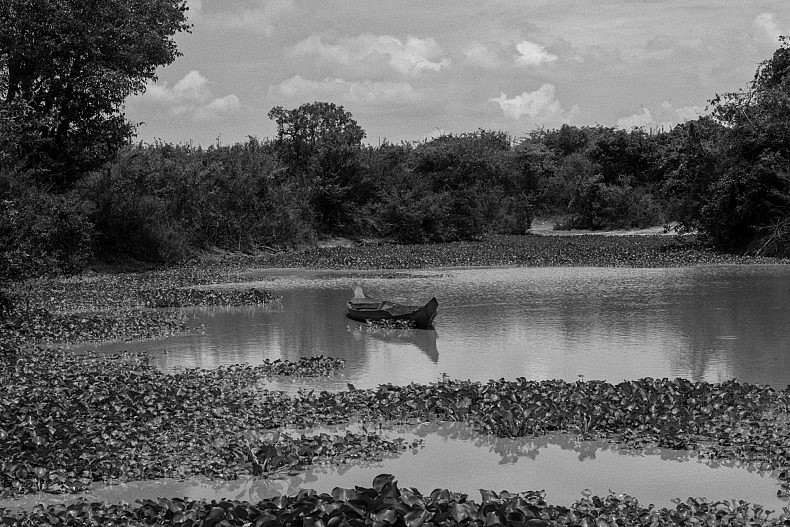
Horm supervises the protection of several fish nurseries in small ponds what will be absorbed into the lake when the dry season is over. Photo by Gareth Bright
Additionally, Horm supervised the protection of several fish nurseries that played an even larger role in repopulating the Tonle Sap’s fish. “There are thousands of fish in each pond,” he told us, gesturing to a muddy pool 4 km inland from the lake, protected from exploitation only by the permanent presence of a paid security guard. So far from the water it was difficult to see a connection between the stagnant ponds and the Great Lake, but when the water level rose in several months the entire area would be inundated, absorbing the young fish into its vastness. “Ponds like these can contribute up to 20 percent of all fish [in the lake],” Horm told us, contextualizing what we were looking at.
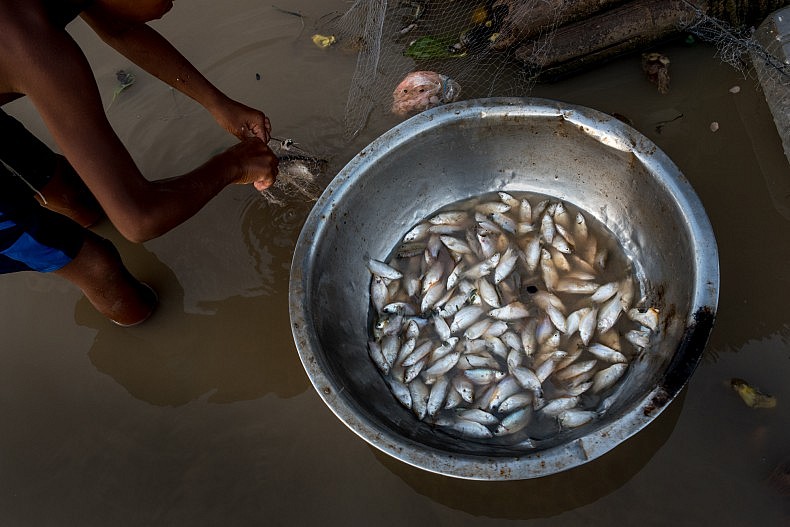
A fisherman picks fish from his net. Photo by Luc Forsyth
“It’s not about the money,” Horm said when we asked about his motivations for undertaking such a monumentally difficult task as keeping the Tonle Sap healthy. “I asked for this job because I want to conserve the animals and the forest. When I see the fish [vanishing] and the forests burning I feel a lot of regret.”
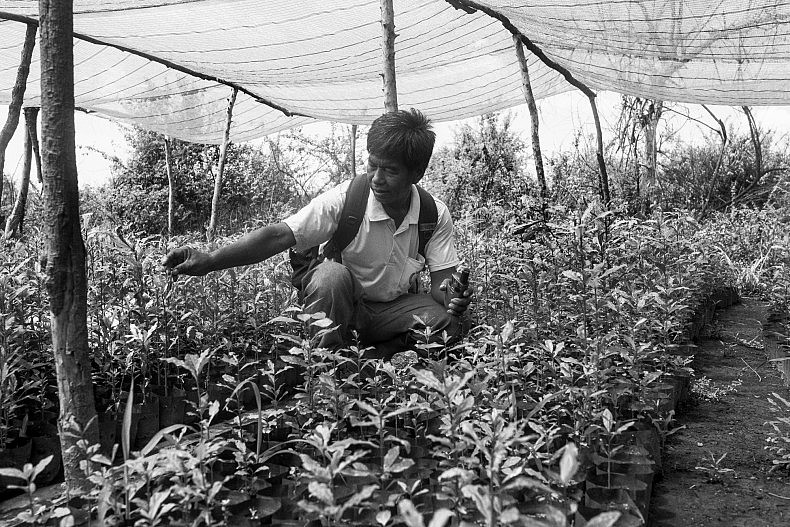
Horm has been living in Akol since 1979, six years ago he took a job to preserve the lake. Photo by Gareth Bright.
A Lake Like No Other
“There is nothing else like the Tonle Sap. It’s like an inland ocean, a fish soup,” Taber Hand, founder of the water-focused social enterprise group Wetlands Work!, told us in his Phnom Penh apartment. Though we were physically distant from the lake, his passion for its health was plain and his knowledge vast.
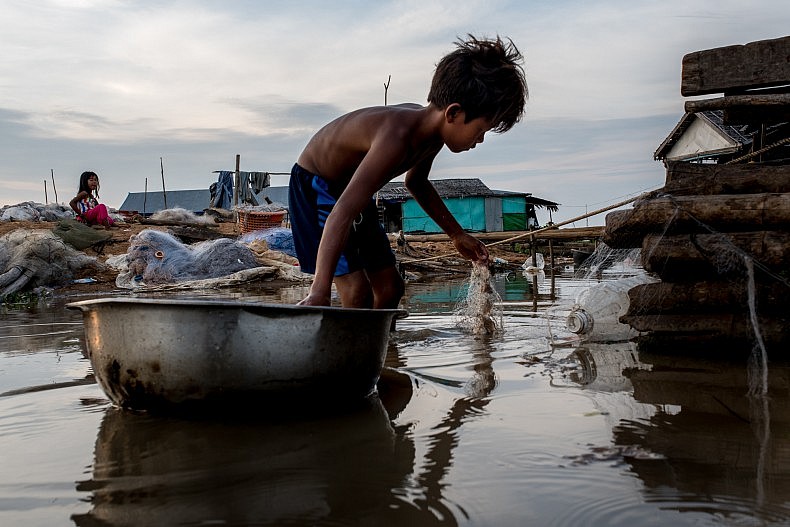
A boy checks his nets. Photo by Luc Forsyth
“There are more fish by tonnage in the Tonle Sap than in both the commercial and recreational freshwater sectors of the United States and Canada combined,” he continued, surprising us with the staggering statistic. “But the lake is a poster child for tragedy.”
Paradoxically, one of the most devastating environmental blows to Cambodia’s waterways was the government-mandated closing of industrial fishing corporations in the early 2000s. In an attempt to garner political support, the incumbent government ordered that all large scale commercial operations be disbanded and the fishing grounds returned to the people. While the idea might seem harmless on paper, the real world results were devastating. Despite the huge numbers of fish caught by industrial fishing, the international corporations involved understood that they needed to protect the ecosystem in order to secure a financial future for their companies. When these companies withdrew, taking with them the armed guards who protected their fisheries, a resource free-for-all ensued. In the mad dash to claim land for rice farming, harvest valuable tree species, and fish the abundant waters, the populist policy brought about widespread destruction.
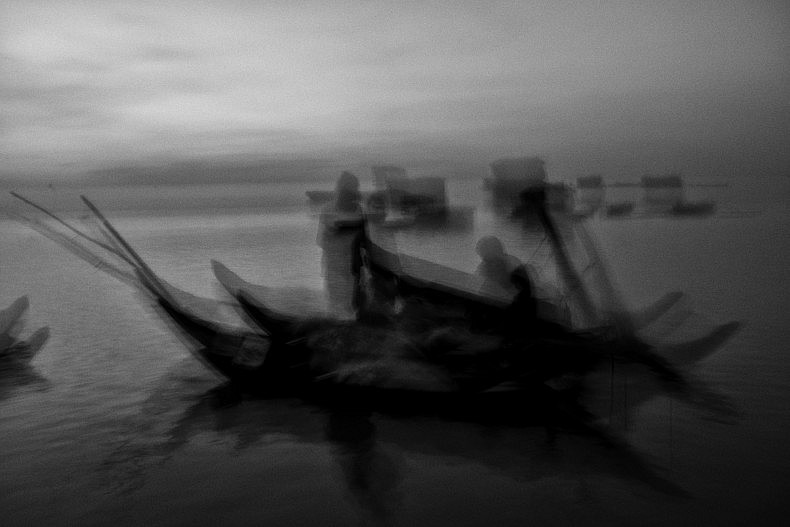
Early morning on the Tonle Sap. Photo by Gareth Bright
“The industrial fisheries protected the lots by force, which angered the population. But by playing to the people, [Prime Minister Hun Sen] doomed the waterscape. The former lots have become habitat wastelands, totally destroyed by deforestation. They’re probably getting 0.5 percent of what those areas produced before,” Hand explained.
Additional factors such as government corruption (bribed fisheries officials selectively ignoring illegal fishing practices), agricultural pollution, and population growth, have further exacerbated the problem.
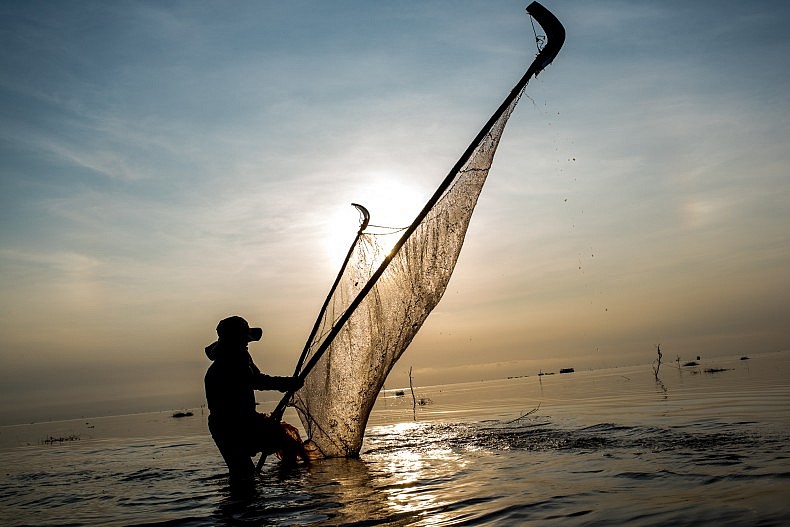
A shrimp fisherman checks his nets. Photo by Luc Forsyth
Though he emphatically told us that there are variety of actions that could be undertaken to restore the Tonle Sap, Hand was pragmatic when we spoke about the likelihood of these steps being taken in time.
“The biodiversity is there to provide more than enough,” Hand told us, “but it’s the human side of the equation, the human priorities, that don’t fit. We could have our cake and eat it too, [the solution] is right there for us to act on, but people want to work for themselves instead of together.”
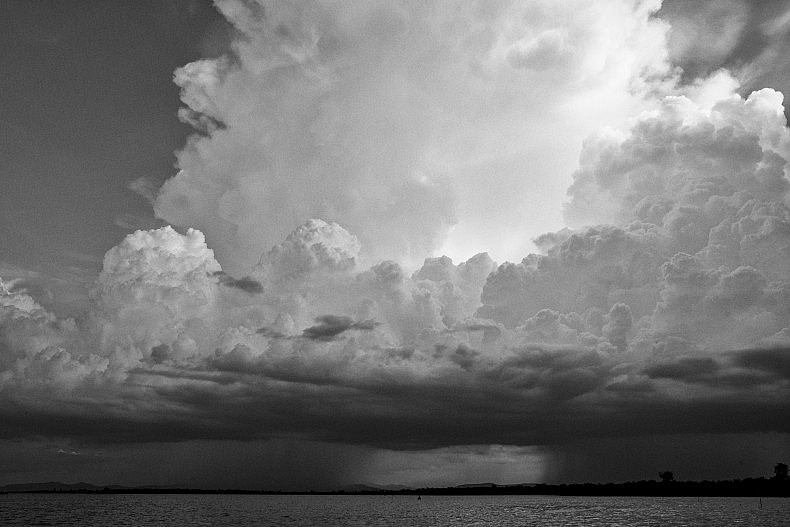
Cambodia’s Great Lake provides much of the country’s protein. Photo by Gareth Bright
In an impoverished country like Cambodia where millions battle on a daily basis to feed their families, it is perhaps not surprising that environmental cooperation is not a top priority. But without such a mass movement, Cambodia’s most important waterway was headed for disaster.
As our meeting with drew to a close, Hand reflected on a telling fact: “‘The Tonle Sap is the heart and soul of Cambodia’ used to be an extremely popular saying. Everyone said it, including the prime minister. But you know, I don’t think I’ve heard anyone say that in at least 10 years.”
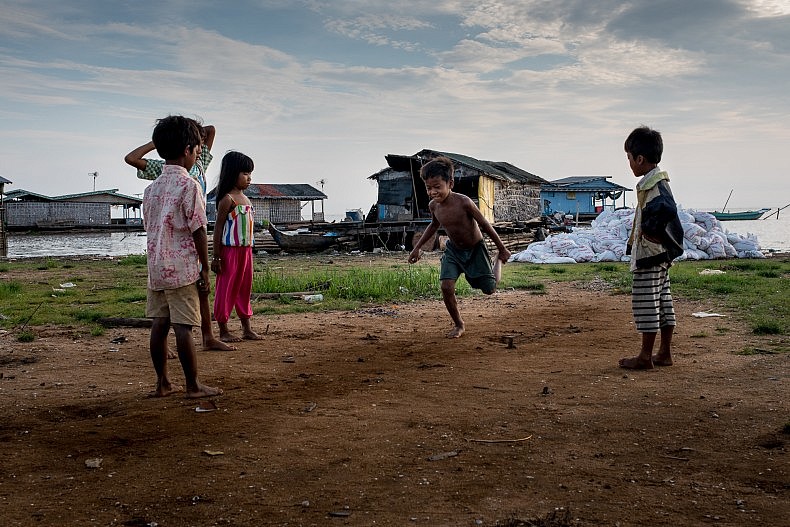
Children play near the village of Akol. Photo by Luc Forsyth
This piece originally appeared at A River’s Tail.













